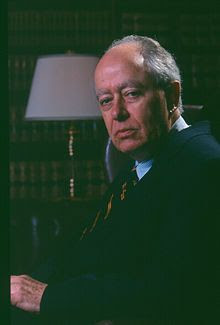by Melinda Pillsbury-Foster
Conspiracy theorists, those who look
for the facts, ignoring the pressure of jeers, flawed appeals to
authority, and intimidation, are the sanest among us. The steady
migration of investigative journalists, who turn their backs on more
lucrative employment, is only one indication of this.
In a recent article, Scientific
Study Reveals Conspiracy Theorists The Most Sane Of All,
the author, J. D. Hayes, cites a recent study,
published July 2013, by psychologists Michael J. Wood and Karen M.
Douglas of the University of Kent in the UK. It was entitled “‘What
about Building 7?’ A Social Psychological Study of Online
Discussion of 9/11 Conspiracy Theories.”
Their conclusion is that, contrary to
those mainstream media stereotypes, “conspiracy
theorists” appear to be
more sane than people who accept official versions of controversial
and contested events.
Attempts to demonize our perception on
conspiracy theorists erects barriers to protect those whose profits
are endangered by the truth.
These techniques for manufacturing
opinion were outlined by Edward Bernays, whose book, "Propaganda,"
asserts those who rule should use the trust accorded them in exactly
this way.
Interestingly, Leo Strauss, whose
political
philosophy
is in alignment with Bernays,asserted the same opinion.
Strauss' work was largely adopted by those who call themselves
NeoConservatives who are anything but Conservative.
The opinion shared was that those in
power are justified to lie, cheat and steal to keep and increase
their power. The Kochs use these techniques
in business and politically.
The use of the term, "Conspiracy
Theory" increased rapidly in the wake of the JFK assassination
due to its pejorative use in the MSM. This worked to stifle
questions already being raised.
The issue
which underlies the article by William Saletan, Conspiracy
Theorists Aren’t Really Skeptics
attempts to validate intellectual bullying, a logical extension of
the philosophies of Bernays and Strauss. You don't get more MSM than
the Washington Post.
In the original formulation of
American society those in positions of authority were morally and
ethically obligated to explain themselves. The facts were to be
available to all. Journalists investigated and reported the truth,
as they saw it. This changed.
Saletan raised the issue of human
psychology but failed to mention a perplexing issue which has long
troubled us. This is the presence of those without conscience. For
most of the 20th
Century therapists believed these individuals could change, the
problem was psychological. Today we know this is a neurological
issue.
Advances in neurobiology have brought
objective understanding. Now, thousands of criminals have been
identified as psychopaths using an fMRI. The scan identified
malfunctions in areas of the amygdala, which is now known to be
associated with conscience, empathy, and compassion.
According to Dr. Robert Hare, serial
murderers and con-men are always psychopaths. But Hare has also
noted many who are also psychopathic are not violent and well able to
control their impulses to gain far more expansive goals.
These individuals are highly
intelligent. At any time there are 20,000 psychopaths with I.Q.s
over 180 at large in the United States.
It would be instructive to see test
results from fMRI scans done on Dick Cheney, Karl Rove, and their
cadre.
The cost of psychopathy has been
calculated at around 360 billion a year – in the US. This does not
include the highly intelligent ones which, clearly cost far more,
given the impact of Cheney and company on America. Could the people
who so desperately wanted torture as a tool be emotionally normal?
Today, experts believe the explanation
for the financial meltdown now ongoing can be explained by the
concentration of psychopathic individuals in corporations, finance
and government.
The characteristics of the condition
include calloused unconcern for others. This accounts for the oil
companies which routinely externalize their costs, leaving those
harmed by the toxic waste they cause, to struggle and die.
Those without conscience, willing to
lie for their own profit, have long been with us. But today they can
avoid the troublesome issue of having their actions known and
understood. They have learned to spin.
To ensure this continues they must
continue manufacturing public opinion about their previous actions.
This is why they began using the term, “Conspiracy Theory.” They
work vigorously to ensure the facts remain hidden.
Refusing to accept the officially
mandated opinion on any subject, be in the JFK assassination or
whether or not to give your child pharmaceuticals as treatment for
ADHD has been used to categorize individuals who refuse to
accept predigested conclusions as crazy, stupid or paranoid. When
this happens, rest assured, some corporation's profits could be
impacted.
This is a form of control intended to
intimidate and inject fear. It also marginalizes vast numbers of
people, keeping them in fear so they can be controlled.
To that end they, I call them
Greedvilleins,
also use our love of each other, country, loyalty, and trust, to
manipulate us into wars which profit them and place us in perpetual
debt.
If you limit what is acceptable to
hold as opinions and deny people full access to the facts you
destroy the trust basis of our society. Emotionally normal
people are not comfortable when they cannot trust those around them.
These are rational responses to
existing conditions.
What is insane is trusting
psychopaths. Yet these are now common in finance and government.
You can be sure they will routinely act with a sublime lack of
conscience, for your freedom, your assets and your very life.
To cope with these conditions many
still refuse to think about it, thus avoiding extreme anxiety.
Others, for instance those who look for the facts, and are demeaned
as “conspiracy theorists.”
The presence of highly intelligent
psychopaths among us, who generally avoid being prosecuted, is one of
these explanations.
Saladan's article passes today as
investigative journalism. It pays well and explains why so many
truly honest journalists left to work in the alternative media.



